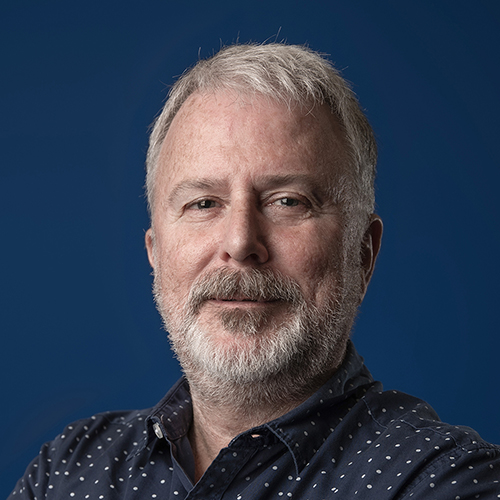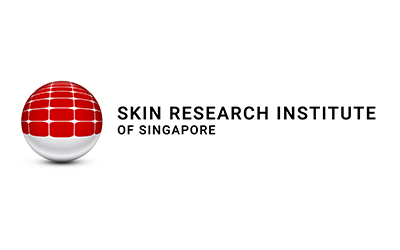David Leavesley

Senior Principal Investigator
Email: d.leavesley@sris.a-star.edu.sg
Research themes: Dermatotoxicology, Medical Technology, Skin Repair & Wound Healing
Biography
David Leavesley has a long-standing interest in the interactions of epithelial cells/tissues with their environment; how they respond, how they adapt; and what they do when they get there. He has always considered research is a privilege, and carries a responsibility to move discoveries from the laboratory into practical, usable and affordable outcomes.
This has allowed him to collaborate with many individuals from diverse backgrounds, knowledge and skills, including patients, surgeons, physicians, nurses, cell biologists, molecular biologists, materials chemists, mathematicians, pharmacologists, mechanical, electrical and biomedical engineers, teachers, lawyers and business partners. Working at the interface between living tissues and the inanimate world has provided him with an extensive technical expertise, particularly in cell and molecular biology, immunology, protein chemistry, clinical medicine and the practical realities of taking a discovery from bench to product and onto patients in need.
Research interests
Inflammation and Non-healing Wounds: Non-healing wounds are ‘stalled’ in the inflammatory phase of the healing cascade. Is this due to 'Extracellular Traps' preventing the transition of inflammatory cells from M1 to M2 functional types?
Treatments for scar-remediation. Compounds isolated from TCMs selectively alter the behaviour of dermal fibroblasts. Our current research is directed at: i) development of an appropriate delivery formulation/strategy; and ii) conduct of a pre-clinical study to test the efficacy of Shikonin as a scar therapy.
Development of diagnostic and prognostic biomarkers of wound healing. We are applying advanced molecular identification technologies to wound fluids and associated clinical data, identifying of a fingerprint for identifying wounds that are on a healing versus non-healing trajectory.
MicroRNAs in wound healing. We have identified changes in microRNA populations from wounds that correlate with cell type, injury and healing. Future studies will include long non-coding RNA species.
Creation of ex vivo human skin equivalent models that recapitulate key biochemical, physiological and functional characteristics of native human skin. Our ex vivo living human skin models are used for discovery of fundamental cellular pathways and mechanisms in a 3D environment; responses to insult and infection; novel wound therapies, dressings and biomaterials; and, toxicology testing of compounds, formulations, and materials.
Selected publications
Fan C, Lim LKP, Loh SQ, Ying Lim KY, Upton Z, Leavesley D. Application of "macromolecular crowding" in vitro to investigate the naphthoquinones shikonin, naphthazarin and related analogues for the treatment of dermal scars. Chem Biol Interact. 2019 Sep 1;310:108747. doi: 10.1016/j.cbi.2019.108747. Epub 2019 Jul 10. PMID: 31301289.
Than UTT, Leavesley DI, Parker TJ. Characteristics and roles of extracellular vesicles released by epidermal keratinocytes. J Eur Acad Dermatol Venereol. 2019 Dec;33(12):2264-2272. doi: 10.1111/jdv.15859. Epub 2019 Sep 9. PMID: 31403744.
Leavesley DI, Kashyap AS, Croll T, Sivaramakrishnan M, Shokoohmand A, Hollier BG, Upton Z. Vitronectin--master controller or micromanager? IUBMB Life. 2013 Oct;65(10):807-18. doi: 10.1002/iub.1203. Epub 2013 Sep 13. PMID: 24030926.
Xie Y, Rizzi SC, Dawson R, Lynam E, Richards S, Leavesley DI, Upton Z. Development of a three-dimensional human skin equivalent wound model for investigating novel wound healing therapies. Tissue Eng Part C Methods. 2010 Oct;16(5):1111-23. doi: 10.1089/ten.TEC.2009.0725. PMID: 20109066.
Upton Z, Cuttle L, Noble A, Kempf M, Topping G, Malda J, Xie Y, Mill J, Harkin DG, Kravchuk O, Leavesley DI, Kimble RM. Vitronectin: growth factor complexes hold potential as a wound therapy approach. J Invest Dermatol. 2008 Jun;128(6):1535-44. doi: 10.1038/sj.jid.5701148. Epub 2008 Jan 17. PMID: 18200066.
ORCID
ResearcherID: C-9532-2009
Google Scholar: //scholar.google.com/citations?user=wT5icDQAAAAJ&hl=en&oi=ao
Scopus: 6603624597
Publons: 1175550
PubMed: Leavesley DI[Author]
Kudos: 294333
LOOP: 467750
QUT ePrints: //eprints.qut.edu.au/id/user/274
A*STAR Open Access Repository
A*STAR celebrates International Women's Day

From groundbreaking discoveries to cutting-edge research, our researchers are empowering the next generation of female science, technology, engineering and mathematics (STEM) leaders.
Get inspired by our #WomeninSTEM
